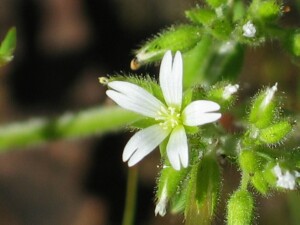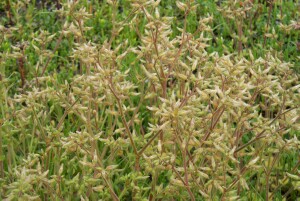Mouse-eared Chickweed
Back | Salinity Indicator Plants Home | Common name home | Scientific name home | Photo Gallery | Glossary
| Mouse-eared Chickweed photos | Family: Chickweed (Caryophyllaceae) |
| Scientific Name: | Cerastium glomeratum | ||||||
Status: | Native to Europe. | 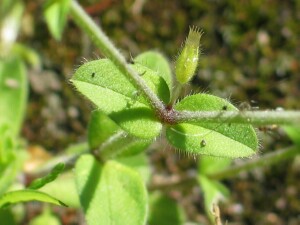 Stem and leaves of Mouse-eared Chickweed Photo: A J Brown | |||||
Plant Description: | Small erect, annual herb with glandular and non-glandular hairs and obovate, elliptic or ovate leaves, 6-25 mm long and 3-9 mm wide. Flower-head a dense terminal cyme (the main axis and all branches end in a flower). Sepals and petals 5, arranged alternately. Sepals green and hairy, 3-5 mm long. Petals white and cleft from the apex into two lobes and are longer than or equal to sepals. Fruit a narrow-cylindrical capsule, 5-8.5 mm long. | ||||||
Habitat: | Widespread weed of waste places, cultivated land and gardens. Also occurs in weak, annual pastures and on damp flats and along water courses. Usually indicative of freshwater environments but may grow on the fringes of salted flats during the wetter months of the year.
| ||||||
Comments: | There are a number of introduced Chickweed species occurring in Victoria. A similar group of species are the Starworts (Stellaria spp.), which are mainly natives of swamps and damp woodlands but also includes the introduced Chickweed (Stellaria media), a common weed of cultivated ground. |
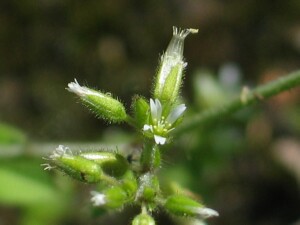 Opening flowers of Mouse-eared Chickweed Photo: A J Brown | 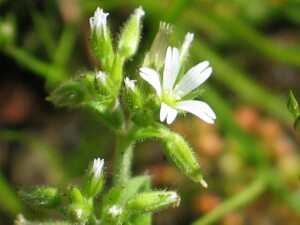 Flower and buds of Mouse-eared Chickweed Photo: A J Brown |
|
|

